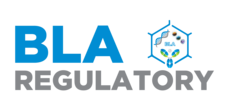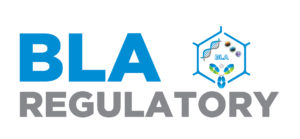2020 End of the Year Summary Report-2
FDA Approved 13 New Large Molecule Drugs and 2 New Gene Therapy Products
BLA Regulatory, LLC (Gaithersburg, MD) provides the following summary of 2020 FDA approved new large molecule (LM) drugs and gene therapy products. Reviewers/Readers are suggested to open FDA links for detailed information and accuracy.
Number of approved LM drugs and Gene Therapies in sub-categories
| Therapeutic Area | Formulation | Regulatory Program | |||
| Oncology | 6 | IV Solution | 11 | Breakthrough Therapy | 2 |
| Genetic disorder | 3 | Subcutaneous Solution | 3 | Fast Track | 1 |
| Neurology | 2 | Lyophilized powder | 1 | Orphan Drug | 11 |
| Infection | 2 | Priority Review | 3 | ||
| Metabolic disease | 1 | ||||
| Ophthalmology | 1 | ||||
| Number | New Drug formulation | Sponsor | indication | Drug target | Regulatory special program | Unique clinical design | Details | Approve Date |
| 1 | TEPEZZA (teprotumumab-trbw)
Lyophilized powder for intravenous infusion
LM |
Horizon Pharma Ireland, Ltd. | Treatment of Thyroid Eye Disease | IGF-1R | Priority Review, Fast Track, Breakthrough Therapy Designation and Orphan Drug designation | “There were two randomized, double-masked, placebo-controlled trials that provided data for approval of TEPEZZA.
Patients with active thyroid eye disease received TEPEZZA by intravenous infusions (10 mg/kg for first infusion and 20 mg/kg for the remaining 7 infusions) or placebo infusions every 3 weeks for a total of 8 infusions.
The main outcome measure was the proptosis responder rate at week 24 defined as the percentage of patients with ≥2 mm reduction in proptosis in the study eye from baseline, without deterioration in the non-study eye (≥2 mm increase).” |
FDA link | 1/21 |
| 2 | VYEPTI (eptinezumab-jjmr)
intravenous infusion
LM |
Lundbeck Seattle BioPharmaceuticals, Inc. | The preventive treatment of migraine in adults | CGRP | N/A | “The efficacy and safety of VYEPTI were evaluated in two similar, randomized, multicenter, placebo-controlled clinical trials.
Trial 1 enrolled patients with episodic migraine. VYEPTI or placebo was administered by intravenous infusion every 3 months for 12 months; however, the primary endpoint was measured at 12 weeks.
Trial 2 enrolled patients with chronic migraine. VYEPTI or placebo was administered by intravenous infusion every 3 months for 6 months; the primary endpoint was measured at 12 weeks.
The primary efficacy endpoint for both trials was the change from baseline in mean monthly migraine days over Months 1-3. Secondary endpoints included the percentages of patients with 50% or greater and 75% or greater reductions from baseline in monthly migraine days over Months 1-3.” |
FDA Link | 2/21 |
| 3 | SARCLISA® (isatuximab-irfc)
intravenous infusion
LM |
Sanofi Aventis US LLC | The treatment of adult patients with multiple myeloma who have received at least two prior therapies including lenalidomide and a proteasome inhibitor | CD38 | Orphan Drug designation | The efficacy and safety of SARCLISA in combination with pomalidomide and low-dose dexamethasone were evaluated in a multicenter, randomized, open-label trial in patients who had had received at least two prior therapies including lenalidomide and a proteasome inhibitor. Patients were randomized in a 1:1 ratio to receive either SARCLISA in combination with pomalidomide and low-dose dexamethasone or pomalidomide and low-dose dexamethasoneTreatment was administered in both groups in 28-day cycles until disease progression or unacceptable toxicity. The primary endpoint was progression-free survival (PFS). PFS results were assessed by an Independent Response Committee based on central laboratory data for M-protein and central radiologic imaging review using the International Myeloma Working Group (IMWG) criteria. | FDA Link | 3/2 |
| 4 | TRODELVY™ (sacituzumab govitecan-hziy)
Intravenous injection
LM |
Immunomedics, Inc | The treatment of adult patients with metastatic triple-negative breast cancer (mTNBC) who have received at least two prior therapies for metastatic disease. | TACSTD2 | N/A | “There was one multicenter, single-arm, trial that enrolled patients with metastatic triple-negative breast cancer (mTNBC) who had received at least two prior treatments for metastatic disease.
Patients received TRODELVY 10 mg/kg intravenously on Days 1 and 8 of a 21-day treatment cycle. Tumor imaging was obtained every 8 weeks, and treatment continued until disease progression or intolerance to the therapy.
Major efficacy outcome measures were investigator assessed ORR using RECIST 1.1 and duration of response.” |
FDA Link | 4/22 |
| 5 | UPLIZNA™ (inebilizumab-cdon)
Intravenous injection
LM |
Viela Bio, Inc. | The treatment of neuromyelitis optica spectrum disorder (NMOSD) in adult patients who are anti-aquaporin-4 (AQP4) antibody positive | B-lymphocyte antigen CD19 | Orphan Drug designation | There was one trial of 197 days duration that evaluated the benefits and side effects of UPLIZNA. The trial enrolled adult patients with NMOSD who were positive for anti-aquaporin-4 antibody. Patients received at random either UPLIZNA or placebo infusions according to the schedule. Neither the patients nor the healthcare providers knew which treatment was being given. | FDA Link | 6/11 |
| 6 | MONJUVI® (tafasitamab-cxix)
Intravenous
LM |
MorphoSys US Inc. | The treatment of adult patients with relapsed or refractory diffuse large B-cell lymphoma (DLBCL) not otherwise specified, including DLBCL arising from low grade lymphoma, and who are not eligible for autologous stem cell transplant (ASCT) | B-lymphocyte antigen CD19 | N/A; Orphan | “The safety and efficacy of MONJUVI were established in an open label, multicenter trial in adult patients with relapsed or refractory DLBCL after 1 to 3 prior systemic therapies. Enrolled patients were not candidates for high dose chemotherapy followed by autologous stem cell transplantation.
Patients received MONJUVI 12 mg/kg intravenously in combination with lenalidomide (25 mg orally on Days 1 to 21 of each 28-day cycle) for maximum of 12 cycles, followed by MONJUVI as a monotherapy until disease progression or unacceptable toxicity.
Efficacy was established based on best overall response rate, defined as the proportion of complete and partial responders, and duration of response as determined by an IRC using the International Working Group Response Criteria.” |
FDA Link | 7/31 |
| 7 | BLENREP (belantamab mafodotin-blmf)
Intravenous injection
LM |
GlaxoSmithKline Intellectual Property Development Ltd. | The treatment of adult patients with relapsed or refractory multiple myeloma who have received at least 4 prior therapies including an anti-CD38 monoclonal antibody, a proteasome inhibitor, and an immunomodulatory agent. | TNFRSF17 | N/A; Orphan Drug designation | “The efficacy and safety of BLENREP were evaluated in a multicenter, open-label trial of patients with relapsed refractory multiple myeloma who had previously received 3 or more anti-myeloma treatment regimens, and whose disease no longer responded to an immunomodulatory agent and a proteasome inhibitor. Treatment was administered as an intravenous infusion once every 3 weeks until disease progression or unacceptable toxicity.
The primary endpoint was ORR, defined as the proportion of patients with a PR or better, as assessed by an IRC based on the IMWG Uniform Response Criteria for Multiple Myeloma.” |
FDA Link | 8/5 |
| 8 | VILTEPSO (viltolarsen)
Intravenous injection
Gene Therapy |
Nippon Shinyaku Co., Ltd. | The treatment of Duchenne muscular dystrophy (DMD) in patients who have a confirmed mutation of the DMD gene that is amenable to exon 53 skipping. | DMD gene (exon 53 viltolarsen target site) | Priority Review, Orphan Drug designation | “VILTEPSO for the treatment of DMD was evaluated in two clinical trials. Enrolled patients had a genotypically confirmed DMD diagnosis (a confirmed mutation of the DMD gene that is amenable to exon 53 skipping) and were on a stable dose of corticosteroids for at least 3 months prior to enrollment.
Trial 1 was a multicenter, 2 period, dose-finding trial. During the initial, double blind period (first 4 weeks), which evaluated the acute safety of VILTEPSO, patients were randomized to VILTEPSO or placebo. All patients were then re-randomized and received 20 weeks of open-label VILTEPSO 40 mg/kg once weekly (0.5 times the recommended dosage) or 80 mg/kg once weekly. The primary efficacy endpoint was the change from baseline in the dystrophin protein level (measured as % of normal) at Week 25.
Trial 2 was a multicenter, parallel-group, open-label, dose-finding trial. Patients were assigned to receive intravenous VILTEPSO 40 mg/kg once weekly (0.5 times the recommended dose) (N=8) or 80 mg/kg once weekly (N=8) for 24 weeks.” |
FDA Link | 8/12 |
| 9 | ENSPRYNG™ (satralizumab-mwge)
Subcutaneous injection
LM |
Genentech, Inc. | The treatment of neuromyelitis optica spectrum disorder (NMOSD) in adult patients who are anti-aquaporin-4 (AQP4) antibody positive. | Interleukin-6 receptor subunit alpha | N/A; Orphan Drug designation | “The safety and efficacy of ENSPRYNG were established in two randomized, placebo- controlled trials of patients with NMOSD.
In both trials, patients were randomized to and received ENSPRYNG or placebo. In Trial 2, all patients were also receiving either concurrent azathioprine, oral corticosteroids, or mycophenolate mofetil during the trial.
The primary efficacy endpoint was the time to the onset of the first adjudicated relapse evaluated by a blinded Clinical Endpoint Committee (CEC).” |
FDA Link | 8/14 |
| 10 | SOGROYA® (somapacitan-beco)
Subcutaneous injection
LM |
Novo Nordisk Inc. | Replacement of endogenous growth hormone in adults with growth hormone deficiency | Growth hormone receptor | N/A | “There was one multinational, double-blind, placebo-controlled trial that provided data for SOGROYA approval.
Enrolled treatment-naïve adult patients with GHD were randomized to once-weekly SOGROYA or placebo for a total of 34-weeks. Additional randomized, open-label arm consisted of patients who received daily somatotropin product.
The efficacy assessment at week 35 was based on the reduction of truncal fat percentage as assessed by dual X-ray absorptiometry.” |
FDA Link | 8/28 |
| 11 | INMAZEB™ (atoltivimab, maftivimab, and odesivimab-ebgn)
Intravenous injection
LM |
Regeneron Pharmaceuticals, Inc | The treatment of infection caused by Zaire ebolavirus in adult and pediatric patients, including neonates born to a mother who is RT-PCR positive for Zaire ebolavirus infection. | Envelope glycoprotein | N/A; Orphan Drug designation | “The safety and efficacy of INMAZEB were established in a multi-center, open label, randomized active-controlled trial. The trial evaluated pediatric and adult patients (including pregnant women) who acquired Zaire ebolavirus infection. All patients received an optimized standard of care. In addition, patients were randomized to receive a single infusion of INMAZEB, an investigational control intravenously every third day, totaling 3 doses, or other investigational drug.
The primary efficacy endpoint was 28-day mortality. The primary analysis population included all subjects who were randomized and concurrently eligible to receive either INMAZEB or the investigational control during the same time period of the trial.” |
FDA Link | 10/14 |
| 12 | OXLUMO™ (lumasiran)
subcutaneous injection
Gene Therapy |
Alnylam Pharmaceuticals, Inc | “A HAO1-directed small interfering ribonucleic acid (siRNA)
indicated for the treatment of primary hyperoxaluria type 1 (PH1) to lower urinary oxalate levels in pediatric and adult patients.” |
Hydroxyacid oxidase 1 | Priority Review, Orphan Drug designation | “OXLUMO was studied in two trials of patients with PH1.
Trial 1 was a randomized, double blind, placebo-controlled trial that enrolled patients 6 years of age and older with PH1 and an estimated glomerular filtration rate (eGFR) ≥30 mL/min/1.73 m2. Patients received 3 loading doses of 3 mg/kg OXLUMO or placebo administered once monthly followed by quarterly maintenance doses of 3 mg/kg OXLUMO or placebo. The primary endpoint was the percent reduction from baseline in 24 hour urinary oxalate excretion averaged over Months 3 through 6.
Trial 2 was a single arm trial in 16 patients <6 years of age with PH1 and an eGFR >45 mL/min/1.73 m2 for patients ≥12 months of age or a normal serum creatinine for patients <12 months of age. All patients received OXLUMO. The primary endpoint was the percent reduction from baseline in the spot urinary oxalate:creatinine ratio averaged over Months 3 through 6.” |
FDA Link | 11/23 |
| 13 | DANYELZA® (naxitamab-gqgk)
Intravenous injection
mAb |
Y-mAbs Therapeutics, Incorporated | “The treatment of pediatric patients 1 year of age and older and adult
patients with relapsed or refractory high-risk neuroblastoma in the bone or bone marrow who have demonstrated a partial response, minor response, or stable disease to prior therapy” |
GD2 disialoganglioside | N/A; Orphan Drug designation | “The safety and effectiveness of DANYELZA were evaluated in two open-label, single arm trials in patients with high-risk neuroblastoma in bone or bone marrow with refractory or relapsed disease.
Patients received DANYELZA 9 mg/kg/cycle administered as three separate intravenous infusions of 3 mg/kg (on Days 1, 3 and 5) in the first week of each cycle and GM-CSF subcutaneously at 250 µg/m2/day on Days -4 to 0 and at 500 µg/m2/day on Days 1 to 5.
The major efficacy outcome measure was overall response rate (ORR) as determined by independent pathology and imaging review according to the revised International Neuroblastoma Response Criteria (INRC) and duration of response (DOR), as determined by independent pathology and imaging review.” |
FDA Link | 11/25 |
| 14 | MARGENZA™ (margetuximab-cmkb)
Intravenous injection
LM |
MacroGenics, Inc. | A HER2/neu receptor antagonist indicated, in combination with chemotherapy, for the treatment of adult patients with metastatic HER2 positive breast cancer who have received two or more prior anti-HER2 regimens, at least one of which was for metastatic disease | Receptor tyrosine-protein kinase erbB-2 | N/A | FDA Link
|
12/16 | |
| 15 | Ebanga (Ansuvimab-zykl)
IV Injection LM |
Ridgeback Biotherapeutics, LP. | To treat ebola | Envelope glycoprotein | Orphan Drug designation and Breakthrough Therapy Designation |
|
FDA Link | 12/21 |



